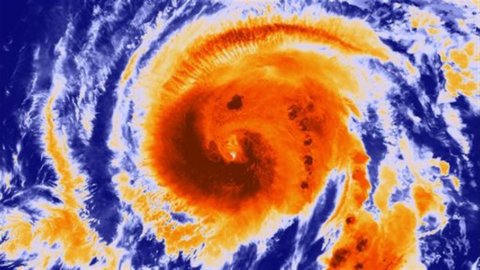In early July, the French insurance group Groupama placed a 280 million euro cat bond, a record transaction for storm risk in Europe (the issue was carried out through the reinsurer Swiss Re and provides for a "historically low" coupon by 2,75%). Cat bonds, or catastrophe bonds, are securities that transfer the risk of a given catastrophe event from the insurer/reinsurer to investors. It is a fast growing market that is worth about 16 billion dollars and is expected to grow to 40 over the next five years. 2013 promises to be a record year: the first half of the year has already recorded emissions at their highest, at 3,35 billion dollars, and suggests that by December it will equal if not exceed the record of 7 billion dollars in emissions set in 2007. Cat bonds benefit on the one hand from greater interest from investors (mainly institutional ones such as pension funds, asset managers, and hedge funds), on the other hand from an evolution of the market itself towards greater flexibility in the terms and structure of the contracts . For example, today more and more cat bonds are being structured that cover “storms with a name” rather than simply “hurricanes”. In fact, in the past, cat bonds specified that tropical storms must be Category 1 hurricanes or have wind speeds above a certain level. Today, however, the concept has taken hold that only storms "with a name" (Sandy, Katrina, etc., for example), can "qualify". As a result, cat bonds also cover those storms that transition into hurricanes and even those that transition into post-tropical status.
However, the coming months will be relatively calm on the emissions front, which will pick up again in the last months of the year: from July/August we begin to reckon with the hurricane season and the market slows down waiting to see where and how the various cousins of Katrina & co. Managers also prefer to remain liquid at this stage. “In recent months we have recorded good capital injections but we have preferred not to weigh down the cat bond portfolio now that we are approaching the hurricane season,” says Otello Padovani, founder of Katarsis Capital Advisors (75% owned by Azimut Holding through Az International holding) and advisor to Azimut's Cat bond fund. In any case, the cat bond market has historically been characterized by a low default rate: out of 600 classes of cat bonds issued, there were only a handful of total or partial defaults: Kamp Re, which fell under the gusts of hurricane Katrina, for example, or Muteki victim of the earthquake in Japan in 2011, the first cat bond to suffer total losses in the sector's twenty-year history.
But the watchword is still diversification: "There is no predictive activity but the goal is to obtain the best allocation to have the least impact through geographical diversification, diversification by type of risk (hurricane, earthquake , pandemics…) and by activation mechanism”, explains Padovani who recalls how “there was more than one cat bond that insisted on Katrina but only one was hit because it had a different activation mechanism from the others”. The portfolio of the Azimut Cat bond fund is built using all the cat bonds available on the market, both in the Non-Life and Life classes. At the moment, in fact, out of 130 cat bonds on the market, the fund is invested in 84, with the remaining 50 representing replicas of others (the bond that weighs the most does not go beyond 2%), according to a buy-and-go approach hold. The net return objective is the 3-month Euribor + 2%. In 2012 the fund (which manages 257 million euros in assets, minimum investment of 1.500 euros) had a return of 2,57% (net of management and incentive fees of 1,5% and 0,012% respectively ). In the first five months of 2013, the fund gained 1,45%. The main objective is to give a return uncorrelated with respect to the rest of the asset classes with a contained volatility of less than 1,5% (historical volatility at 0,75%).
“The portfolio construction strategy – explains Padovani – is aimed at the stability of returns as well as the maximization of returns. The performance depends only on the occurrence of natural events and is not related to human psychology or financial markets”. And the credit risk relating to the company issuing the bond is also neutralised: the cat bond is not a simple corporate issue but is built on legally autonomous special vehicles (Spv) which deposit the investors' money in an escrow account for the benefit of the insurance company which transfers the risk, in the event that the natural event occurs, and to the benefit of the investor, in the event that the event does not occur. In any case, the risk-return ratio is relatively well paid: against the same risk of default, the cat bond pays a higher spread than a normal issue from a corporate issuer would pay. Thanks to its oligopolistic structure, the reinsurance market manages to get good remuneration from insurance companies.





